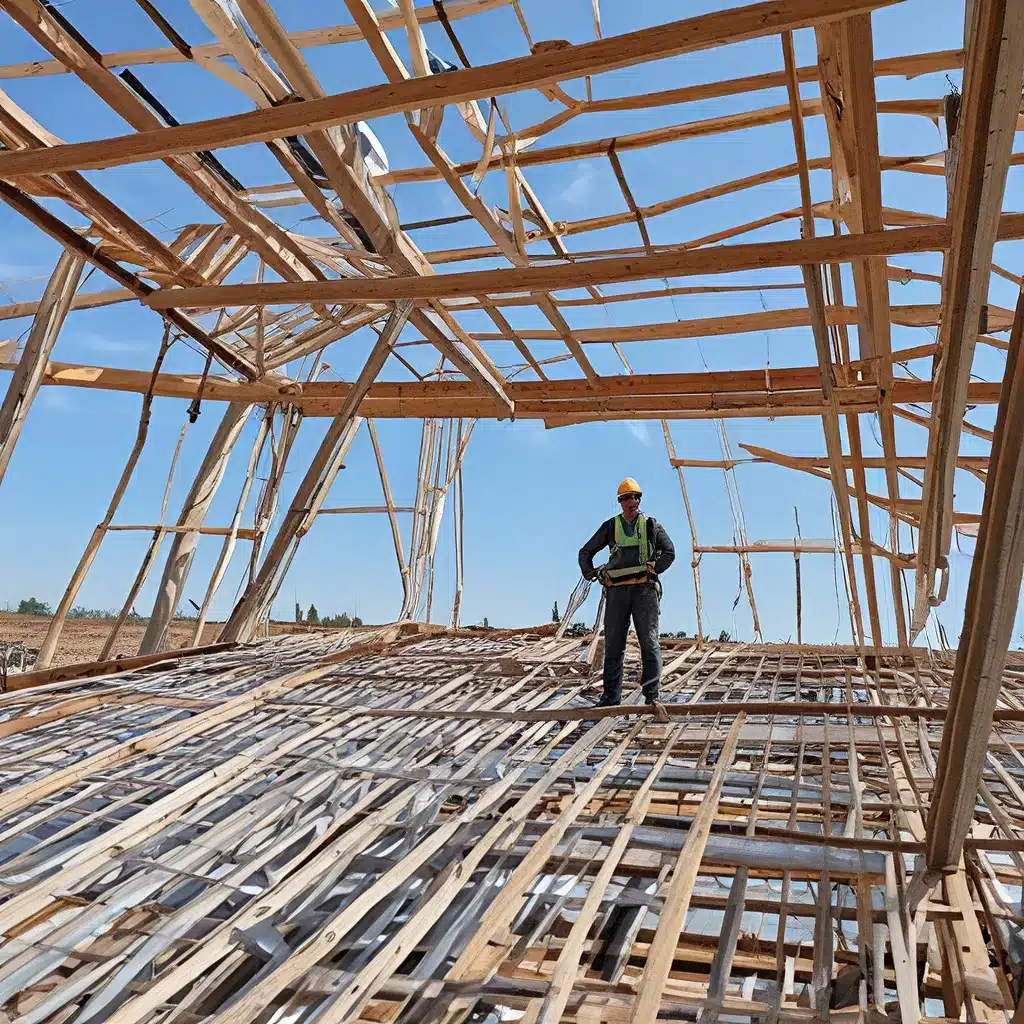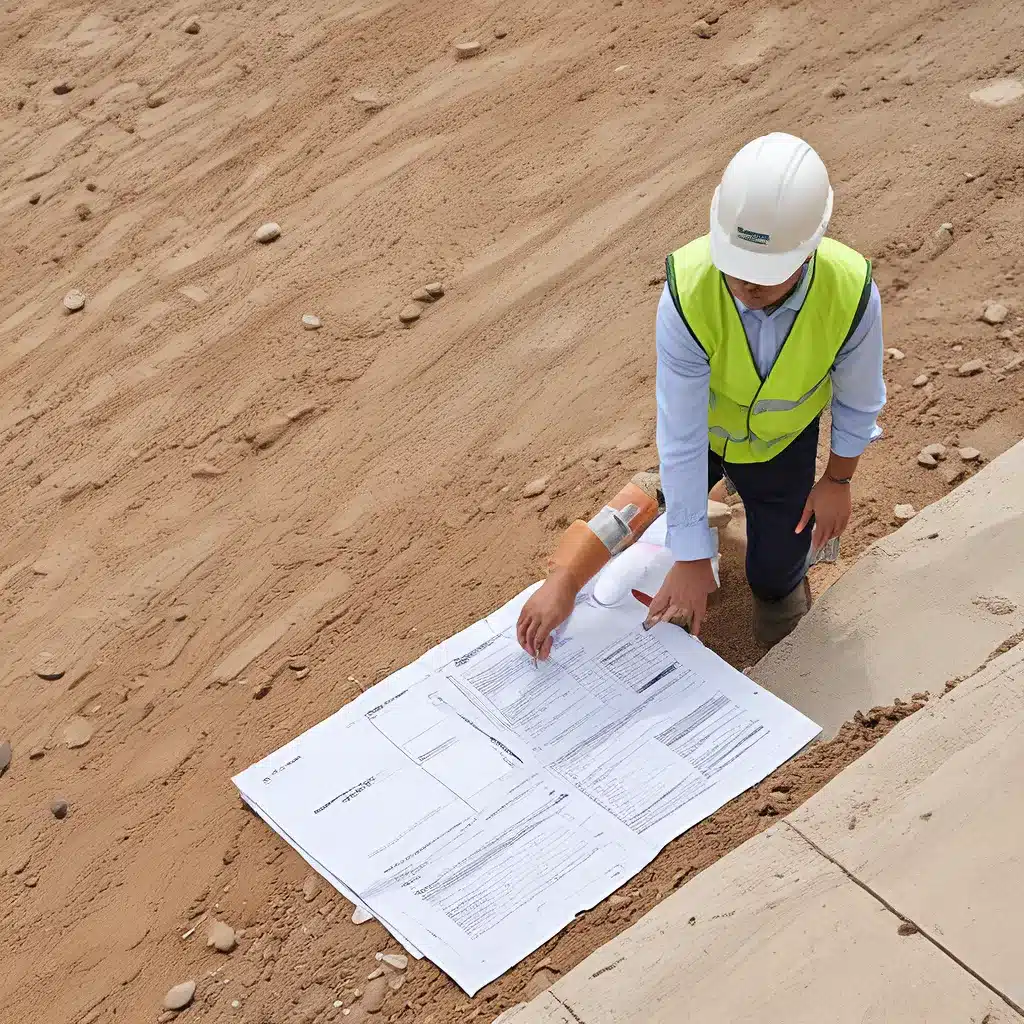
Ah, the construction industry – a realm where the old and the new collide, where the concrete of the past meets the renewable dreams of the future. As a general contractor, I’ve seen it all – from the towering skyscrapers that pierce the sky to the humble homes that cradle our loved ones. But lately, I’ve noticed a shift in the winds of change, and it’s all about one thing: renewable energy.
You see, the construction industry has long been the silent culprit, responsible for a staggering 38% of the world’s energy-related carbon dioxide emissions. But just like a contractor faced with a crumbling foundation, we have the power to rebuild, to reinvent, to create a brighter tomorrow. And at the heart of this transformation lies the embrace of renewable energy.
The Radiant Future Awaits
The future of sustainable construction is as bright as the sun itself. As the expenses associated with renewable materials and technologies continue to decline, the demand for eco-friendly structures is skyrocketing. Governments around the globe are stepping up, introducing regulations and incentives to propel these sustainable practices forward.
Recent data reveals a 25% growth in the global solar market and a 13% growth in the global wind market in 2022 alone. And according to the International Energy Agency, by 2050, renewable energy could provide a staggering 80% of global electricity generation.
But it’s not just about harnessing the sun and the wind – the construction industry is embracing a whole host of sustainable innovations. From green building materials like wood, bamboo, and recycled resources to energy-efficient technologies like LED lighting and smart thermostats, the industry is undergoing a remarkable transformation.
In 2022, the global market for green building materials reached a value of $280 billion, and the use of recycled materials in construction is expected to experience a 7% annual growth over the next five years. Meanwhile, the global market for energy-efficient technologies was valued at a whopping $15 trillion, with the integration of these technologies in commercial buildings anticipated to yield annual savings of $100 billion by 2030.
Quenching the Thirst for Sustainability
But it’s not just about energy – the construction industry is also tackling the challenge of water conservation. Techniques like rainwater harvesting and greywater recycling are gaining traction, with the global market for water-saving technologies holding a valuation of $120 billion in 2022. By 2030, these water-saving innovations are projected to save a staggering $300 billion annually.
And the best part? Sustainable construction doesn’t just benefit the environment – it also benefits our wallets. Lower energy and water bills, reduced maintenance and repair costs, and the preservation of our precious natural resources all add up to a win-win situation.
Embracing the Passive Revolution
But the sustainable revolution doesn’t stop there. Passive design principles, like natural ventilation and solar shading, are taking the industry by storm. These innovative techniques have the potential to slash energy consumption by up to 80%, and as the costs of energy and water continue to rise, we can expect to see them become increasingly prevalent.
Passive design is the future, my friends – a future where buildings breathe and adapt, where they work with nature instead of against it. It’s a future where we can create comfortable, energy-efficient spaces without breaking the bank or the planet.
Overcoming the Challenges
Of course, the path to sustainable construction isn’t without its challenges. The upfront cost of sustainable materials and technologies can be daunting, and the industry still faces a skills gap when it comes to trained professionals in this field. But as the demand for sustainable buildings grows, so too will the investment and the talent pool.
And let’s not forget the importance of government regulations and incentives. While some regions are leading the charge, there’s still work to be done to create a more level playing field for sustainable construction. But with the right support, I believe we can overcome these hurdles and make sustainable construction the norm, not the exception.
Shaping the Future, Together
So, my fellow contractors, the time has come to embrace the power of renewable energy and sustainable construction. It’s time to be the heroes of our own story, to design for a brighter tomorrow.
When you’re building that next project, choose the sustainable materials and technologies that will reduce your carbon footprint and save your clients money in the long run. Support businesses that are leading the charge in this space, and encourage your local government to introduce regulations and incentives that will drive the sustainable revolution forward.
And who knows – maybe one day, the Reading General Contractor will be the one leading the charge, setting the standard for sustainable construction and inspiring others to follow in our footsteps. Because together, we can create a future where the only thing we leave behind is a better world.
Related posts:
No related posts.




